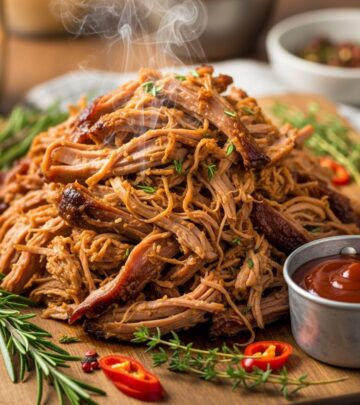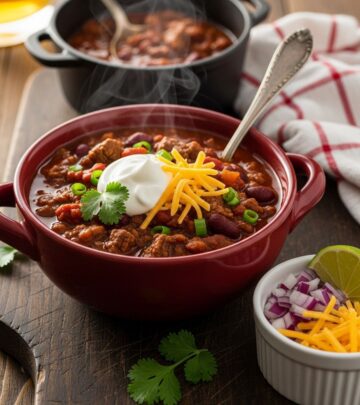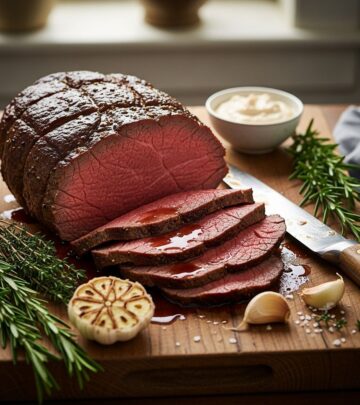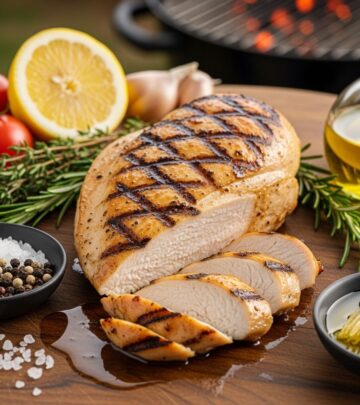Mela d’Alba: The Apple Brandy Negroni—History, Craft, and Flavor
An orchard-inspired aperitivo that balances bittersweet depth with crisp, fruity warmth.

The Negroni, a simple cocktail with iconic status, has welcomed hundreds of variations—but few are as intriguing or as challenging as the Mela d’Alba: a sparkling, bittersweet blend of apple brandy, sweet vermouth, and Campari. As the apple orchard answers the call of Italian aperitivo, this drink’s story is one of both nostalgia and innovation. Join us for a deep exploration into the roots, technique, and flavor profile of this Negroni twist.
A New Chapter for the Negroni
The classic Negroni formula—gin, sweet vermouth, Campari—has delighted cocktail lovers for over a century. It’s the perfect trio of bitter, sweet, and spirits. Bartenders worldwide have explored countless spinoffs, from the Boulevardier (with whiskey) to the Kingston Negroni (with rum). Enter the Mela d’Alba, or Apple Brandy Negroni: a cocktail that replaces gin’s herbal edge with the robust, orchard-driven character of American apple brandy.
- Distinct twist: Swapping gin for apple brandy transforms the drink’s flavor foundation.
- Bittersweet balance: Campari remains the unifying bittersweet backbone.
- Vermouth’s voice: The sweet vermouth bridges brandy and bitter, tying the cocktail together.
The Origins of the Mela d’Alba
The origins of the Mela d’Alba are less storied than the Negroni itself, yet they are rooted in a playful approach to cocktail design. Created by Andrew Friedman of Seattle’s Liberty Bar, this drink was made famous by its inclusion in Gary Regan’s seminal cocktail book, Negroni. The name “Mela d’Alba” hints at “white apple,” encapsulating the crisp, clean influence of American apple brandy. While the recipe is printed, it leaves room for interpretation, especially in the selection of the sweet vermouth component.
- Creator: Andrew Friedman, Liberty Bar, Seattle
- Popularized by: Gary Regan’s Negroni
- Unfixed in tradition: Open to vermouth and apple brandy variation
Why Use Apple Brandy?
The heart of the Mela d’Alba is apple brandy, preferably a robust, bonded American style such as Laird’s Straight Apple Brandy. Applejack or softer European apple spirits may not provide the same punch—so bartenders emphasize the need for a spirit with depth and weight capable of standing up to Campari’s assertive bitterness and the lush sweetness of vermouth.
- Apple Brandy: Brings rich fruit, oak, and spice
- Bonded: Preferably 50% ABV (100 proof) for structure
- Flavor impact: Adds tart, fresh, and subtle vanilla notes
The “2:1:1” Structure
While the Negroni is built on equal parts, the Mela d’Alba’s structure is a bit different. The recipe calls for a 2:1:1 ratio:
| Ingredient | Amount |
|---|---|
| Apple brandy | 2 oz |
| Campari | 1 oz |
| Sweet vermouth | 1 oz |
This heavier pour of brandy powers the cocktail, while Campari and vermouth create the velvet curtain of bittersweet. The result is a strikingly bold drink, with apple’s complexity shining at the fore.
The Mela d’Alba Recipe
Ready to mix? Here is the standard recipe, with a few tips for nailing the technique and extracting every lush note from its trio of ingredients.
- Add 2 ounces of bonded apple brandy, 1 ounce of sweet vermouth, and 1 ounce of Campari to an old-fashioned glass filled with ice.
- Stir gently but thoroughly to achieve ideal dilution and chilling—about 15–20 seconds.
- Garnish with a lemon twist (express the oils over the glass and place it atop the drink).
Serving tip: Don’t skip the lemon twist—it’s crucial for a pop of brightness and balancing aroma that brings together the apple’s lightness and Campari’s imposing intensity.
Choosing Ingredients: Expert Tips
The Mela d’Alba is surprisingly sensitive to choice of ingredients. Here’s a closer look at the impact of each:
- Apple Brandy: Opt for Laird’s Bonded or another straight apple brandy; avoid lightly flavored applejack.
- Sweet Vermouth: This is an open field. Choose a higher-acidity, less sugary bottling for balance (think Carpano Antica, Dolin Rouge, or Punt e Mes for bitterness).
- Bitters: Campari is non-negotiable—but adjust vermouth for sweetness and bitterness if needed.
- Lemon twist: Express for brightness, not just decoration.
Seasoned bartenders and home mixologists alike note that too-sweet vermouth will tip the drink into cloying territory, while too-low-proof apple brandy will let Campari dominate. Experiment in small batches for your ideal blend.
Aesthetic, Texture, and Taste
Visually, the Mela d’Alba is an autumn jewel: deep orange, flecked with red edges from the Campari, and catching the gold light of the brandy. Aromatically, tart apple peers through herbal, citrus, and vanilla notes, followed by the dense, spicy perfume of classic Negroni botanicals.
- Texture: Velvety and rich, with just enough dilution to avoid syrupiness.
- Flavor balance: Starts with apple and citrus, segues into bitter and spice, with a lingering tart finish.
- Bitterness: Campari’s punch leans forward but never overwhelms.
- Sweetness: Controlled by your choice of vermouth and apple brandy strength.
Comparisons: Mela d’Alba vs. Classic Negroni and Variants
| Cocktail | Spirit Base | Vermouth | Bitter/Liqueur | Profile |
|---|---|---|---|---|
| Mela d’Alba | Apple Brandy | Sweet Vermouth | Campari | Fruity, bold, bittersweet |
| Classic Negroni | Gin | Sweet Vermouth | Campari | Herbal, bright, bitter |
| Boulevardier | Whiskey | Sweet Vermouth | Campari | Spicy, bitter, rich |
| Kingston Negroni | Rum | Sweet Vermouth | Campari | Funky, sweet, bitter |
Experimentation: Getting to the “Right” Recipe
The Apple Brandy Negroni is not as widely codified as its siblings. The Mela d’Alba’s current recipe evolved through “workshopping”—testing various apples, vermouths, and bitters to arrive at a blend that is bold but not overpowering, and familiar yet novel. Though the cocktail looks simple, nuances matter. Makers commonly experiment with:
- Brandy proof and style: Higher proof yields more intensity and length.
- Vermouth blend: Combining two vermouths—one light, one bitter—adds complexity.
- Citrus touch: Orange or grapefruit twist for a different aromatic pop.
- Serving temperature: Over large ice cubes for slower dilution.
Masters recommend tracking your ingredient changes, so you can repeat your favorite results or tweak for next time. The goal: a perfectly balanced, deeply flavorful, comforting-yet-intriguing cocktail experience.
Creative Variations and Serving Ideas
The Mela d’Alba welcomes subtle adaptation for personal taste or seasonal occasion:
- Seasonal spice: Add a dash of Angostura bitters for more baking spice warmth.
- Fruity tang: Drop in a thin slice of apple for garnish or muddle in the glass before stirring.
- Lighter drink: Split vermouth with a dash of amaro for more bitterness/less sugar.
- Holiday punch: Batch the recipe, serve on a platter of ice with sliced apples and citrus for a group celebration.
Pairing and Occasions
The Mela d’Alba is at home before dinner—especially with rich cheeses, roasted nuts, or charcuterie. Its robust structure allows it to stand up to hearty foods without becoming lost, yet its orchard notes and citrus zing make it refreshingly appropriate for early fall, apple season, or festive gatherings.
- Cheese pairing: Blue cheese, aged cheddar, or a mild washed-rind variety.
- Charcuterie: Prosciutto, apple sausage, or pork rillettes.
- Desserts: Caramel apple tartlets, vanilla panna cotta, or bittersweet chocolate.
Frequently Asked Questions (FAQs)
What is the main difference between the Mela d’Alba and a classic Negroni?
The Mela d’Alba swaps gin for apple brandy, giving the cocktail deep fruit flavors, spices, and added warmth, while the classic Negroni is herbal and crisp.
Can I use regular applejack instead of bonded apple brandy?
You can, but it’s not recommended. Bonded apple brandy is higher proof and offers the robust apple flavor required to balance Campari and vermouth.
What’s the best vermouth for the Mela d’Alba?
Opt for a high-quality, less-sweet vermouth with herbal notes. Experiment with blends to find your preferred balance—try Carpano Antica or Dolin Rouge.
How should I garnish the Mela d’Alba?
A lemon twist is traditional and brightens the drink; you can also try orange or apple slices for a twist.
Is this drink good for batching or parties?
Yes! Mix in advance, chill thoroughly, and garnish just before serving. It’s especially suited for autumn or holiday gatherings.
Final Thoughts: Embracing the Spirit of Experimentation
The Mela d’Alba showcases how creative thinking and attention to ingredient detail can yield a modern classic—and inspire bartenders and home enthusiasts everywhere. Try variations, log your tweaks, and share with friends: cocktail culture thrives on curiosity and the search for perfect harmony in a glass.
References
Read full bio of medha deb












